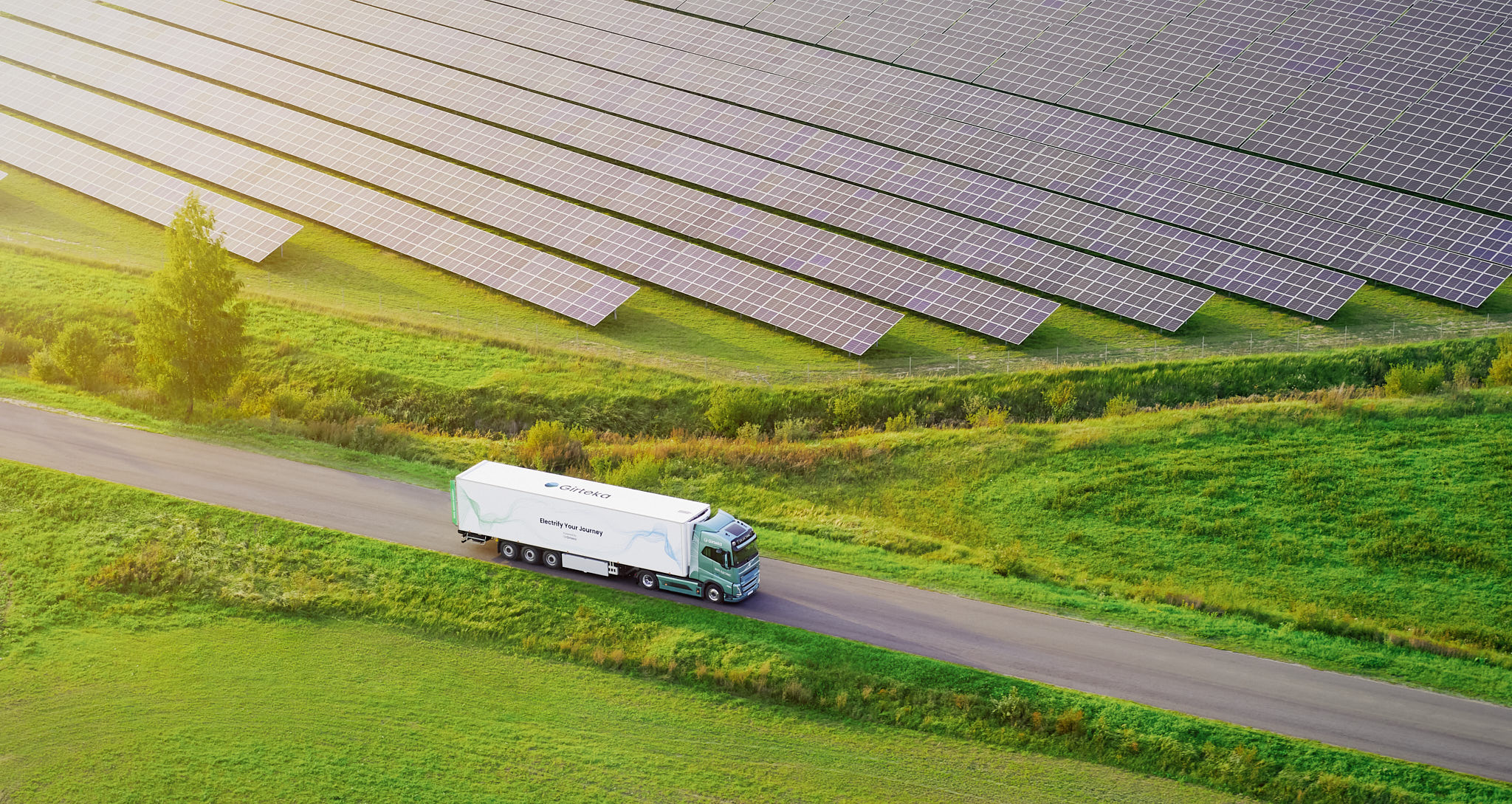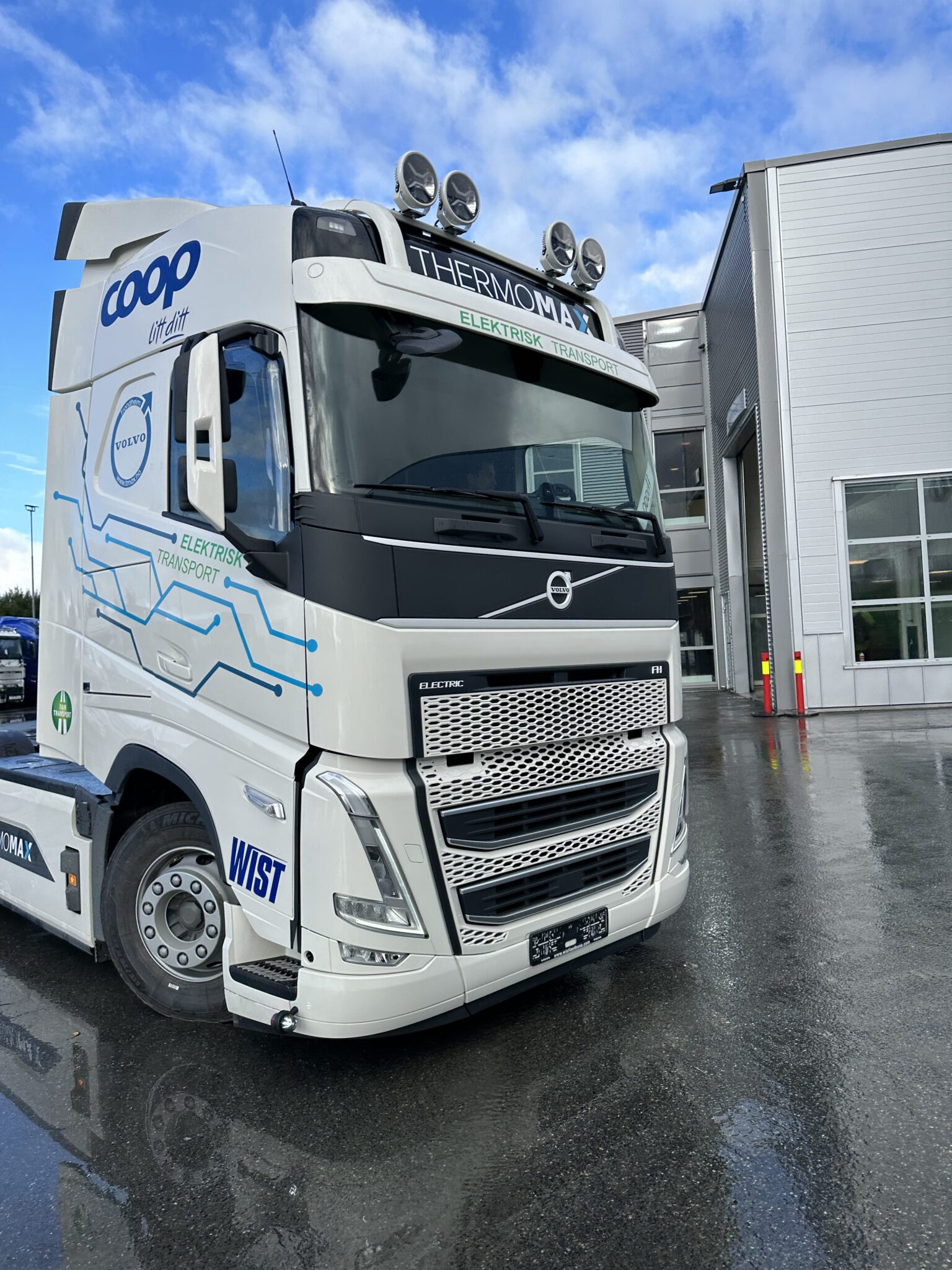Girteka has recently launched a pioneering tool in the logistics industry known as the Battery Electric Vehicle Insight (BEVI). This tool is uniquely designed to allow businesses to evaluate the feasibility and benefits of transitioning to battery electric vehicles (BEVs) for their logistics needs without the need of purchasing additional software.
The BEVI stands as the first tool of its kind, providing the opportunity for companies to gain personalized insights into how battery electric trucks can transform their operations. By simply entering the details about their typical routes and vehicle specifications, users will receive a comprehensive report that includes total route distance, estimated energy consumption, and required charging times.
Your Step-by-Step Guide to Using the BEVI
To access the tool, analyse its potential, and receive insights on electrifying your supply chain, follow these simple steps:
1. Visit our dedicated BEV landing page at www.girteka.eu/electric-trucks
2. Scroll down and enter your planned route information into the BEVI, including the start and end points.
3. Select the type of trailer you would utilize on that route (tilt, reefer).
4. Specify the type of terrain that characterizes your route (mountainous, flat, or a combination of the two).
5. Specify the total weight of the cargo to be transported.
6. Add any required or potential waypoints along your route.
7. Enter the expected duration of loading and unloading procedures.
Tailored Solution One Click Away
Upon completion of these steps, the BEVI will process the inputs and generate a comprehensive report detailing total route distance, estimated energy consumption, required charging times, and locations. This personalized report provides a clear snapshot of what switching to BEVs for your transport needs would look like, making your supply chain more sustainable and efficient.
“With such insights, each company, whether it operates in domestic or cross-border markets, can easily check their options if they were to utilize battery electric trucks on their routes. With support from our dedicated sustainability team, we can work on individual solutions, where we adapt drafted ideas into tangible, optimized, and environmentally sustainable solutions,” describes Remigijus Stugys, Marketing Manager at Girteka.
The transition to electric vehicles represents a significant step forward in the decarbonization of road transport. However, this shift also presents challenges such as infrastructure development, initial investment costs, and operational adjustments. Tools like the BEVI help companies navigate these complexities by demonstrating feasible scenarios and use cases of adopting BEVs, accompanied by solutions tailored to the client’s specific needs and requirements.
Collaborative Approach to Sustainable Logistics
The development and launch of the BEVI underscores a collaborative approach involving customers, manufacturers, and transport companies. “Only through shared efforts and a unified vision can we effectively decarbonize the logistics sector in a way that benefits both our planet and our economies,” states Viktorija Terekė, Head of Sustainability at Girteka.
This tool offers a straightforward, easily accessible way to understand the steps toward the implementation of electric vehicles in daily logistics operations. It is designed to provide businesses with practical data, helping them make informed decisions as part of a broader effort to reduce transport emissions. Together, companies and carriers can take meaningful steps towards decarbonization, recognizing that progress requires collaboration and a series of small, but impactful actions rather than a single solution.
read more






 Addressing Challenges and Advancing Solutions
Addressing Challenges and Advancing Solutions